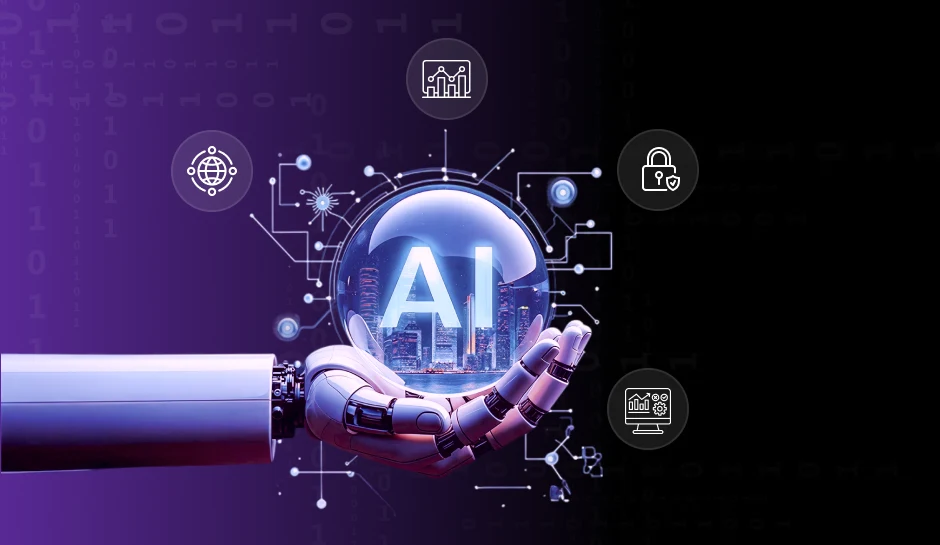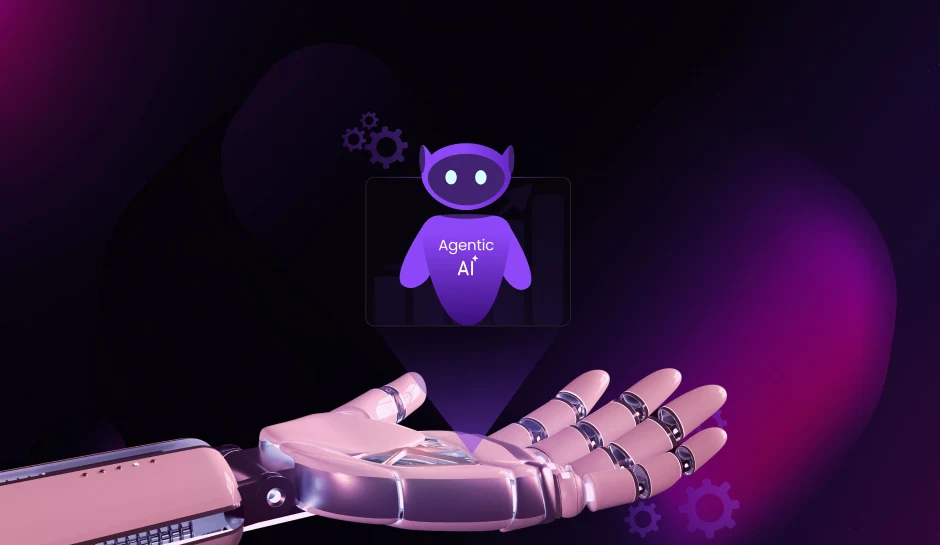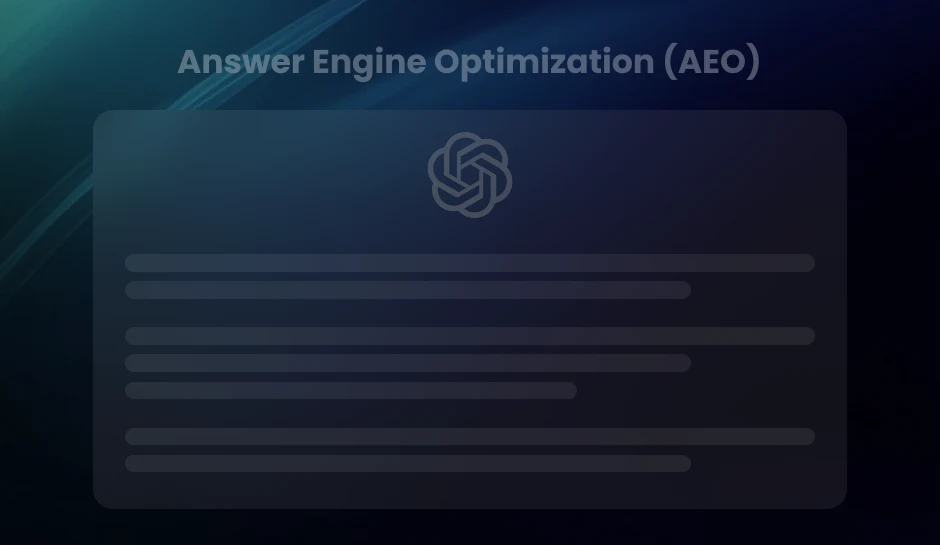Why isn’t your digital presence converting like it should?
In this episode of The Revenue-Focused Marketer, host Hershey sits down with Warren Miles-Pickup, Founder of Pixel True, to break down the real reasons websites underperform—and what to do about it.
From human psychology and sales empathy to AI integration and smart SEO, Warren shares practical, psychology-driven marketing strategies that help business owners and SaaS marketers improve digital engagement and increase conversions.
Whether you’re struggling with bounce rates, passive leads, or confusing funnels, this episode delivers actionable insights to help you fix your digital assets and build a high-converting customer journey.
By tuning into this episode, you can expect to come away with an understanding of:
- Why most websites fail to convert (and how to fix them)
- The role of psychological triggers in buying behavior
- How to apply sales empathy in digital marketing
- Where AI helps (and hurts) your personalization strategy
- Why your value ladder matters more than ever
- The continued (and evolving) importance of SEO
- How to write content that answers customer search intent
- Warren’s favorite marketing and psychology books for growth
Featured Speakers:-

Warren Miles-Pickup
Founder - Pixel TrueWarren is a seasoned digital marketing strategist who helps businesses turn passive websites into conversion machines. With deep expertise in customer psychology, conversion-focused design, and content strategy, he’s on a mission to eliminate guesswork from digital marketing. Through his companies, Warren supports SaaS founders, agencies, and business owners in building systems that speak directly to customer pain points and drive action.

Harshika Chadha
Lead Product Manager – DiGGrowthHarshika is a seasoned product manager passionate about business transformation, design thinking, technology, marketing trends, SaaS security, and human-computer interactions. Her deep interest in the intersection of these fields keeps her at the forefront of industry insights, uncovering success strategies for today’s fast-changing business landscape.
More From Our Content Repertoire:
- SEO Analytics Strategies: Boosting Your Website’s Full Potential
- AI-Driven Marketing Insights: How Data-Powered Strategies Drive Business Success
- The Data Value Chain – Transforming Raw Data Into Marketing Gold
Transcript
0:10:
So hello and welcome to another episode of the revenue-focused marketer where we discuss anything and everything related to marketing as well as data.
0:19:
I’m your usual host, Hershey, and today we’re gonna be talking about a very exciting topic.
0:25:
If you’re a business owner, coach, or consultant, kind of struggling to turn your online presence into actual paying clients, this episode is the one for you.
0:36:
, I have the person here to help me answer all the questions.
0:41:
So let’s meet Warren.
0:42:
Warren, thank you so much for joining us here today.
0:45:
Thank you so much for having me on the podcast.
0:47:
I really appreciate it.
0:48:
It’s great to get a chance to talk to you.
0:50:
Yeah, I’m so excited and just a little bit background about him.
0:54:
He’s the CMO and founder behind Pixar 2.
0:59:
he has 3 brands dedicated to helping businesses craft high converting website messages.
1:04:
in sales and not just that, he’s also the co-host of the flawed Dad’s Guide to Parenting, one of Canada’s top parenting podcasts.
1:14:
So I think we have a great speaker with us today and I’m really excited to kind of dive in.
1:20:
Thank you.
1:22:
, let’s kind of start, you know, instead of just talking solutions, let’s kind of start with the biggest problems.
1:29:
Why do you think so many business owners struggle with Like digital conversions, you know, maybe we can kind of talk about that.
1:37:
, that’s, you know what, that’s a fantastic question and a great place to start because most business owners are thinking about their business, their product, their service before they’re thinking about their consumer and, , their, their ideal client profile.
1:52:
So they want to showcase what it is that they’ve built.
1:55:
Obviously because they’re incredibly proud of it, you know, they, they’ve built something that they’ve meant to , that they want to get out there to help people to solve a problem, but their, their digital assets are all focused on what it is that they have done, what it is that they have built, and it’s about themselves rather than making their ideal client profile the hero of the story that, you know, they’re not positioning, they’re marketing in a way that is addressing the problems and the pain that they The ideal customer is coming them to solve.
2:26:
And so when they’re building their website or their lead magnets or their, their landing pages, their white papers, it’s all focused on here’s what we do to help you rather than here’s your problem, here’s what you should do in order to solve it, here’s why we’re the best positioned in order to, to move forward and help you to solve that problem.
2:46:
So it’s, it’s really a reframing of how they speak with their ideal client, , from, you know, them being important to the client being important.
2:57:
Mhm.
2:58:
I think that’s such an important point, and, you know, it’s very easy to kind of miss on the end user or the target consumer.
3:06:
, we kind of really focus on what we know best about the product, but fail to kind of, you know, dive deeper into the problem with the customer that we’re kind of dealing with here.
3:15:
I also kind of read that you know you were really into the approach of being backed by human psychology.
3:22:
So can you walk us through some of the psychological triggers that, you know, kind of influence decision making and buying decisions and like, you know, what kind of got you to having this approach?
3:33:
Absolutely.
3:34:
Yeah, so when we’re, when we’re working with our, with our clients, , the focus is really on utilizing that human psychology through, , heuristics and cognitive biases.
3:45:
So, think about, , the decisions that you have to make on a daily basis.
3:49:
There are thousands and thousands of data points that you have to encapsulate and condense.
3:54:
Down into a decision that needs to take, you know, , milliseconds for you to be able to decide.
4:01:
And in order for you to do that, your brain has created these shortcuts that are called heuristics.
4:06:
, and so there are a series of biases that you have that lead you towards either saying yes to something or saying no to something.
4:14:
And when we’re, when we’re constructing digital assets, websites, those sorts of things, we wanna work alongside those heuristics so that we make the decision process as easy and fast as possible.
4:26:
If we’re working in conflict with them, we’re significantly more likely to get a bounce.
4:30:
Off of the website or we’re going to get a rejection of the offer that we’ve put forward, , it, it’s not going to accomplish what it is that we want to accomplish, which is eliciting the emotions to drive somebody to take action to perform what’s in their best interest, .
4:47:
So when we’re looking at it, we want to make sure, are we following, you know, an F-shaped reading pattern, the way in which we typically analyze a piece of information or follow data?
4:57:
Are we utilizing the single option bias?
5:01:
, so, you know, are we making sure that there are multiple options for somebody to choose from in order to ensure that they are going to , they’re gonna make a positive decision rather than rejecting the overall offer.
5:13:
, are we using anchoring?
5:14:
So, , do we have it so that the first thing that they’re recognizing that the first piece that comes into their perspective is something that is going to give them a positive, , , a positive overall view of everything they see after, afterwards.
5:28:
So as an example, if you put pricing on your website, right?
5:32:
The traditional model is to put your lowest price, , product or service on the left, your middle priced product, and then your highest priced product.
5:40:
The problem with that is with anchoring, which is a, a heuristic that we, we take the first point of data that we see, and it, it alters our perspective of everything else we see.
5:50:
Everything else looks expensive after that, whereas if we show our our highest price, our highest value product on the left hand side, everything after that looks relatively inexpensive, so we’re much more likely to move forward with purchasing one of those other two options because they look like they’re a good deal in comparison to the first offer.
6:10:
Other things would be things like scarcity, urgency, , exclusivity.
6:15:
Like there’s a lot of different ways to make your product or service really stand out and elicit those emotions.
6:21:
The, the vast majority of people are sitting on the fence.
6:25:
They’re, they’re not ready to make a decision because the pain or the The work that’s involved in making a change is more substantial than the pain or or challenge of staying where they are right now.
6:39:
So they will just sit on the fence, like 80% of people are just gonna sit there.
6:42:
You’ve got 3% of people that are ready to buy, 17% of people that are never going to buy, and the other 80% just sit there.
6:50:
And until you’ve given them the reasoning and the impetus to, to make that change, , that the, the pain of that change will be less than the pain of sitting where they are, they’re not gonna make a decision.
7:01:
And so when we’re building, we want to ensure that we are utilizing these these heuristics to showcase to them that the pain of change is gonna be less than the pain of staying where they are right now.
7:11:
It’s a, it’s a process that’s called education-based sales, and it was popularized by a gentleman named Chet Holmes, who was the right hand man of Charlie Munger, , ran their sales across a lot of their national organizations.
7:25:
, and he lays it out really well in a book called The Ultimate Sales Machine.
7:29:
I would highly recommend it.
7:31:
, and, and so that’s essentially where I came across this concept and then read more into it with the secrets of, , of selling by David Hoffeld and a number of other, , psychology books, , decisive by Chip and Dan Heath.
7:45:
, lot, there’s a lot of information.
7:48:
Out there about utilizing the way in which we think to present information in a very effective manner.
7:54:
Made to stick, which is right here is another good one by Chip and Dan Heath.
7:59:
, I’m an avid reader.
8:00:
I really like these topics around human psychology.
8:03:
So I utilize this in my previous career in finance, where I sold about $2 billion worth of financial products and services.
8:11:
And I found that it was incredibly effective to work alongside of those people that I was selling to to ensure that I was really understanding what their pain points and what their goals were so that I could position products and services that aligned with the direction that they were looking to go.
8:29:
And when we when we built Pixel True, it was really about taking all of those strategies in a highly saturated marketplace like finance and making it work with digital assets and digital marketing through the through the impact of design.
8:45:
I know that was a very long-winded answer to to what you asked, but I wanted to make sure I got all of the points in there.
8:51:
No, that’s incredible, and I think it’s so important to, you know, , something you kind of talked about that stuck out to me was that the pricing page example, it’s crazy.
9:02:
There’s so many times that I I look at pricing, but I’ve never looked at it the way that you shared so that’s definitely something that I’m gonna, you know, take forward when I’m designing the next pricing page.
9:13:
But let’s kind of talk about, we kind of, you know, you kind of mentioned about like, you know, content kind of being curated to people that you’re addressing to.
9:22:
And in today’s marketing sort of or today’s world in general, AI has become the biggest buzzword.
9:29:
Gen AI is kind of there, like, you know, it’s been a kind of topic people have been talking about, but agentic AI is, you know, something that’s coming up next.
9:39:
So I wanna talk to you about.
9:41:
Like, you know, the space now that marketing is changing so much, , how can people still, you know, use AI but still kind of keep that personalization and still be able to get in touch with that human psychological aspect that you kind of mentioned about.
9:58:
That’s another great question.
10:00:
, there is, and again I’ll mention that I’m a reader.
10:03:
, there’s a really good book on this called Humans Are Underrated.
10:07:
, and he talks about the future of, , the future of the workplace as technology evolves and, and gets more, more, .
10:18:
, integrated with the way in which we work and the, the biggest challenge with utilizing technology and artificial intelligence is that it doesn’t have the ability to utilize empathy, right?
10:29:
And, and empathy is what really drives us to make decisions, the understanding of the, the pain, the, the, , the drive, the ambition, , what it is that is causing people to utilize the emotions to to actually push forward with making that decision.
10:47:
And so you can utilize AI in terms of how you write, how you structure, , how you, , you know, summarize, build products, those sorts of things, but it doesn’t necessarily understand that pain that that is behind why somebody is going to make a decision.
11:03:
And so you have to, if you’re going to be utilizing AI, you really need to feed that information in there and search for why clients are making the decisions that they are.
11:13:
, and if you position that, , with the, the AI, whether it’s the agent that you’re using or, , A, a copywriting, , program or anything like that, you, you need to be, , pushing in that, that empathetic aspect of understanding your, your client’s perspective, why they’re making decisions and then being able to take that and customize it based on the person that you’re speaking to, right?
11:40:
, as much as sales agent, AI based sales agents are definitely gonna become a part of it.
11:46:
They don’t necessarily know how to recognize the, the customized pain points that somebody’s feeling.
11:52:
They’re not asking the right questions to understand, , 2 to 3 levels deep, the, the motivation behind why somebody is making that decision.
12:01:
If I ask somebody, , a business owner, you know, what is it that you’re looking to do with your website, and they say generate more sales, the next question is, well, why do you want to generate more sales?
12:12:
What’s important, , behind generating more sales?
12:15:
Oh well, I would like to.
12:16:
You know, increase, , revenue to, so that I can, , take home a larger, , percentage of profit.
12:22:
OK.
12:23:
What is it that’s driving that, , desire to have a larger percentage of profit, OK?
12:29:
You know, it’s because I want to support my family.
12:31:
I want to, , be able to offer an ownership incentive to my employees.
12:37:
You know, there’s, there’s typically motivation that is 3 to 4 levels deep that we’re not getting at with these surface level questions that an AI agent is.
12:46:
is asking because they’re, they’re looking to just accomplish what you put in as a prompt, not necessarily dive deeper, get to know the person that you’re speaking to and really uncover the, the core aspect of why somebody’s making decisions.
13:00:
And so that’s where you can blend in that interpersonal and empathetic aspect that an an AI agent or AI copywriting can’t really get at.
13:12:
That’s such an interesting point.
13:14:
, a lot of our listeners.
13:16:
Here are like, you know, people who are either owners of SAS platforms or CMOs that are kind of working on SAS platforms and like, you know, with the introduction of AI with so many tools coming out, this space is very saturated now.
13:31:
So what would be, you know, your advice, like what are maybe three things that, you know, these business owners or CMOs can do today to kind of help in getting more from their digital presence.
13:46:
, I, so I would, the first thing I would do is go over all your digital assets and make sure that they are addressing, , the core issues of your ideal client profile.
13:55:
, so maybe take a step back.
13:58:
Do you have an ideal client profile and an avatar that properly represents who you, you the person you want to be serving is and, and, .
14:08:
I would say that even if we take another step back, are you in a service mindset?
14:13:
Like that, that service mindset is one of the most important things that any business owner can, can, , really focus on.
14:21:
, do I have it an intention of making this person’s life better, right?
14:27:
It’s not just selling them a product, it’s about improving their life so they’re receiving a higher level of value than you are, .
14:35:
In terms of ROI that ROI could be emotional, it could be time, it could be, , revenue, whatever your your focus is.
14:42:
If they’re getting more value out of your, your service than you are, it means that they’re always going to be coming back because it’s a positive relationship for them.
14:51:
, so going through your, your digital assets, your website, landing pages, all of that, and understanding, am I truly addressing the pain points that my ideal client is facing in the way that I am structuring this?
15:03:
, do I have them as the focus of who, , presenting the information in a way that they’re going to be able to consume to make the decision that we want them to be able to make, which is in their best interest?
15:14:
Next, I would go back and look at, do I have a product staircase or a value ladder that clearly identifies the steps that this individual needs to take to engage with my organization and get the most value possible?
15:29:
Is it an incredibly clear path?
15:31:
That they know that they can see to get from here’s where we’re we’re providing free information on social media to here’s our highest value offering what are the steps that they need to take in order to get there that makes sense for them based on where they’re entering our funnel.
15:48:
, and a lot of businesses do not have anything like that.
15:51:
It’s, it’s, here’s my, my free content that I’m having on, on Facebook, Instagram, you know, any social media platform, and here’s my highest value product and I expect you to make that jump as a consumer, which is never gonna happen.
16:06:
They’re not, they’re not going from free.
16:07:
Content to, I’m going to spend $15,000 on your SAS platform.
16:11:
There needs to be steps along the way that allows them to utilize microtransactions of trust to to get into that relationship with you so that they know with each additional stage they’re going to have a higher and higher ROI from you.
16:26:
And then the third thing I would say would be, , you know, are your sales people really understanding the core problem set of the individual that’s sitting in front of them?
16:37:
Are they going 3 to 4 levels deep in those questions to, to get the, , an understanding of the motivation behind making that decision?
16:46:
And I would say most salespeople are are sticking at that very skin deep level that is not getting to the core of the problem.
16:55:
Those are extremely wonderful points, and I think especially the#2 point that you talked about, I see a lot of platforms kind of doing this where they just have like, you know, here’s my free ebook or e-guide, and then the expectation is that you kind of buy the product, but there are no steps in the middle like premiums and different utilities that they can kind of share.
17:16:
To build that trust, so I think that’s definitely, you know, and all three of these points are really relevant and actionable for people to be able to apply now.
17:27:
, so thank you again for sharing that.
17:29:
, I wanna kind of pivot here and understand, like, you know, what role do you think SEO plays in these digital con conversions and.
17:39:
How much do you think businesses should focus in it, especially because I think the way we search is really kind of evolving now.
17:46:
I know I personally used to Google mostly everything and now it’s kind of had GBT help me find this, and I don’t even want to like, you know, go through a couple links anymore.
17:57:
So, , yeah, I would just love to get your perspective on that.
18:02:
I think it’s still a, it’s still a significant contributor to organic traffic, , and I, I think it will, it will take a while for this transition to happen.
18:11:
, one of the biggest, , drivers of change in this right now is the Google AI overviews, where it’s pulling information from all the sites and that’s showing up as your first, , instead of your, your first website being the top of the page.
18:27:
is the Google AI overview, which is causing people to not necessarily click into those top few, , top few links that’s showing up in the Google search.
18:36:
That, that will probably be one of the most dramatic changes of how this works.
18:40:
But you can still build credibility by being The source that that Google’s AI overview is feeding off of, , you know, it still shows the links that are in there, , to, to provide you with additional credibility and, and, you know, that’s happening.
18:56:
If, if Google’s AI overview is there and saying, oh we got this information from this website, you know, that immediately dramatically.
19:03:
Increases your credibility.
19:05:
I think the key that is missing from most SEO is that people aren’t necessarily thinking of it as search intent-based marketing, right?
19:13:
They, they’re thinking of it as I need to put out as much information as I possibly can, and they’re writing blog articles or content on their website.
19:23:
With a focus of just let’s get as many keywords out there as possible.
19:27:
Let’s, let’s throw as much against the wall as as we can without thinking what are the questions that my ideal client profile is actually asking?
19:35:
What is it that they’re trying to find when they go on to Google, , and, and am I answering that question with this article?
19:43:
And so I, I think it’s still gonna play a significant role, particularly in terms of once you’ve got somebody on your website, you need to showcase that authority.
19:52:
You, you have to show that your organization or you, if you’re a solopreneur, has the, , has the authority to be speaking about these topics, to be showcasing the information that you’re gonna be solving.
20:05:
And a lot of organizations are just writing the SEO, like the blog articles and everything, throwing on the, on their website without actually having their teams go through and read and understand the information.
20:17:
So it’s, it’s, there’s a disconnect between the organization and the information they’re putting out there.
20:23:
Like these, these podcasts that I do for my organization, they get sent to all of our team so that our team can then watch and see what it is that we’re saying out there and ensure that our brand actually represents the.
20:34:
Messaging that we are putting out to the public.
20:37:
And that’s an incredibly important step that I think a lot of organizations miss.
20:42:
Wow.
20:43:
Well, this has been such a wonderful session and so much insights that have been shared by you today.
20:49:
So thank you so much for being here today.
20:52:
Before we kind of wrap up, I know you kind of mentioned about, you know, you loving to read books.
20:58:
So if I could, or like, you know, our listeners could just read one book on marketing or leadership, which one would it be?
21:07:
, the Science of Selling by David Hoffeld.
21:10:
That it’s an incredible book.
21:12:
It, it really lays out, , the, the human psychology behind how we make decisions and how you can utilize that in a sales or marketing role to work alongside the, the decision-making process.
21:26:
, fantastic book, highly recommended.
21:30:
Awesome.
21:30:
I’ll definitely add that to my list.
21:32:
And For our listeners here that, you know, kind of want to work with you or learn more about your work, where can they find you?
21:40:
, obviously on our website.
21:41:
So if you Google Pixel True, , it is a good way to do it.
21:44:
, design.
21:46:
pixeltrue.com is, , is our, our landing page.
21:49:
, you can connect with me on LinkedIn, , so Warren Miles pickup on LinkedIn.
21:54:
There’s, there’s only 8 miles pickups in the world, so you will not have any trouble finding me.
21:59:
, please feel free to send me a message and, and connect.
22:02:
I would love to speak with anybody that has questions or, or would like to know more about this.
22:07:
, no hard sales pitch, anything like that.
22:11:
I’m a value first, , type of, of sales person, so I’m all about making sure that anybody, , who has an interaction with me is walking away with significantly more value than what I’m receiving out of it.
22:23:
So please don’t hesitate to get in touch with me if, , if there’s anything I can do to be of assistance.
22:28:
That’s wonderful.
22:30:
Thank you again so much for all the insights that you shared today and for our listeners, please do let us know how you found this episode and don’t forget to, you know, kind of read that book that Lares suggested and get in touch with him.
22:44:
Until next time, definitely keep optimizing, keep growing, and we’ll see you with our next episode.
22:49:
So thank you so much again.




